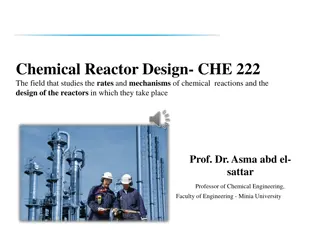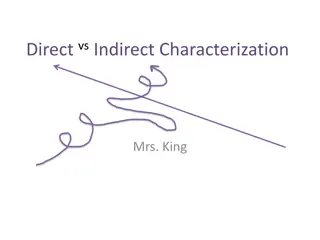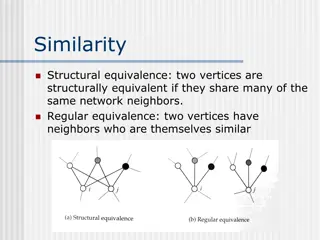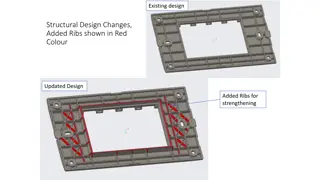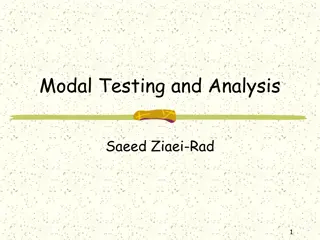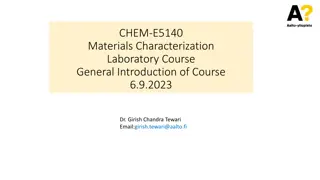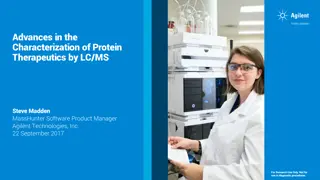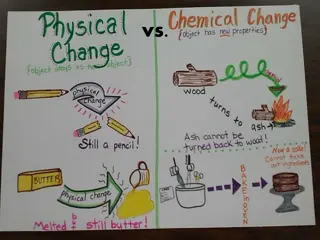Chemical and Structural Characterization Techniques
In the field of material science, chemical characterization methods like optical spectroscopy, electron spectroscopy, ion mobility spectrometry, secondary ion mass spectrometry, and Rutherford backscattering spectrometry are utilized for analyzing samples at a molecular level. On the other hand, structural characterization techniques such as X-ray diffraction, electron microscopy, and dynamic light scattering help in understanding the physical and morphological properties of materials. Both sets of techniques provide valuable insights into the composition, structure, and properties of various materials, aiding researchers in their analysis and development processes.
Download Presentation

Please find below an Image/Link to download the presentation.
The content on the website is provided AS IS for your information and personal use only. It may not be sold, licensed, or shared on other websites without obtaining consent from the author.If you encounter any issues during the download, it is possible that the publisher has removed the file from their server.
You are allowed to download the files provided on this website for personal or commercial use, subject to the condition that they are used lawfully. All files are the property of their respective owners.
The content on the website is provided AS IS for your information and personal use only. It may not be sold, licensed, or shared on other websites without obtaining consent from the author.
E N D
Presentation Transcript
Characterization Characterization Techniques Techniques Tutorial Tutorial 2 2 By By ASSISTANT PROCESSOR ASSISTANT PROCESSOR DR. RAOUF MAHMOOD DR. RAOUF MAHMOOD
Characterization techniques a) Chemical characterization: 1. Optical Spectroscopy 2. Electron Spectroscopy 3. Ionic Spectrometry 4. Rutherford Backscattering Spectrometry (RBS) 5. Secondary Ion Mass Spectrometry (SIMS)
Chemical Characterization 3. Ion Mobility Spectrometry (IMS) is an instrumental method where sample vapours are ionized, and gaseous ions derived from a sample are characterized for speed of movement as a group in an electric field. All IMS instruments operate with an electric field that provides space separation, but some IMS instruments also operate with a drift gas flow which provides also a temporal separation.
Chemical Characterization 4. Rutherford Backscattering Spectrometry (RBS) is an ion scattering technique used for compositional thin film analysis. RBS is unique in that it allows quantification without the use of reference standards. During an RBS analysis, high-energy (MeV) He +2 ions (i.e. alpha particles) are directed onto the sample and the energy distribution and yield of the backscattered He +2 ions at a given angle is measured. In addition to elemental composition, RBS can be used to obtain information on the crystalline quality of single crystal samples. This technique, called channelling , can probe the degree of damage in a crystal.
Chemical Characterization Secondary Ion Mass Spectrometry (SIMS): is a technique capable of providing information about the elemental and isotopic composition of samples in situ from a few micrometres down to the sub- micron scale.
Characterization techniques b) Structural characterization: 1. X-Ray diffraction technique 2. Electron microscopy 3. Dynamic light Scattering
Structural characterization 2. Electron microscopy : Electron microscopy is a multipurpose tool with a range of methodologies to characterize the microstructural features of a sample from 100pm to 100 m length scales.
Structural characterization 3. Dynamic light Scattering: Also known as photon correlation spectroscopy (PCS), is a very powerful tool for studying the diffusion behaviour of macromolecules in solution.









